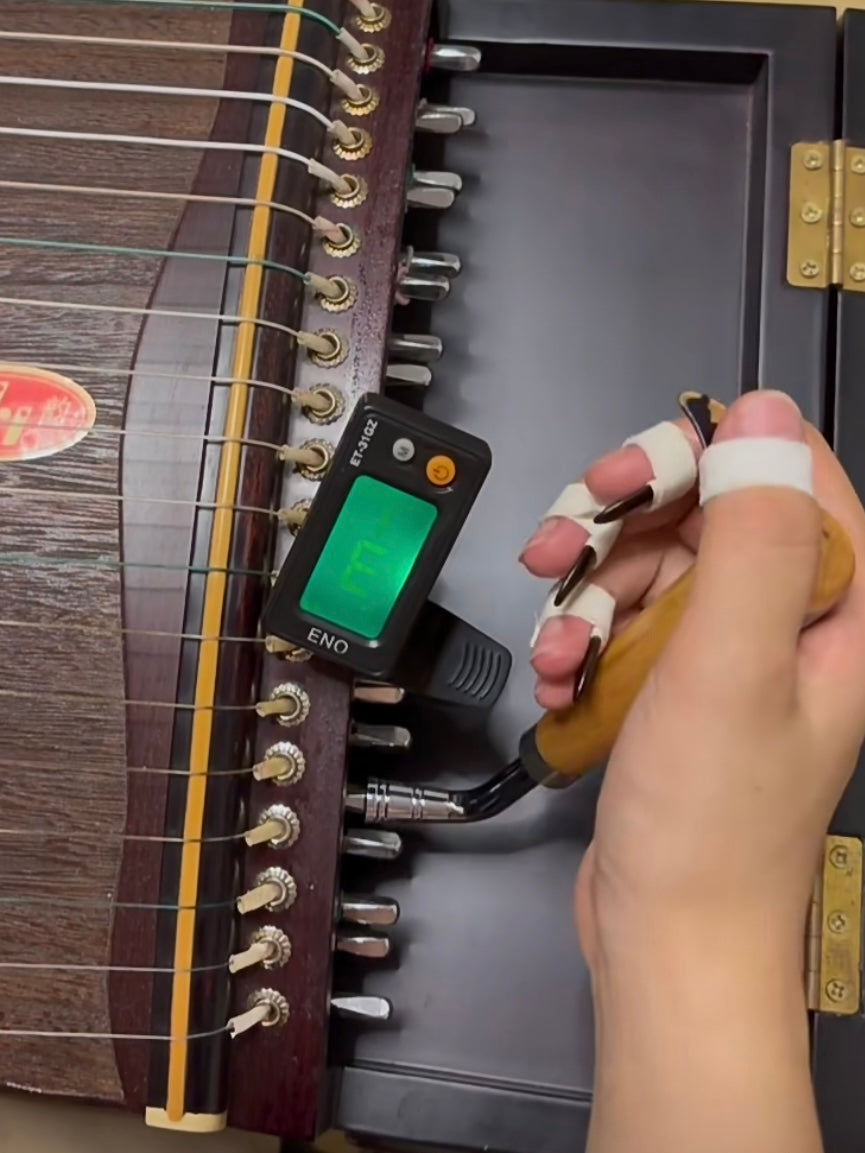How to Tune a Guzheng?
Find below useful information including an instruction video (with English subtitles) in the end

What you should know before tuning
1. Guzheng are widely tuned into D major as the base key which follows the scale demonstrated in the image below. Guzheng can be tuned to other keys too.
2. There are 21 strings with the thinnest one being numbered as string being numbered as #1 while the thickest one as #21.
3. You need either a physical tuner or a tuning app such as X Guzheng Tuner or KeyTuner etc.
4. You need a guzheng tuning wrench which needs to put onto the pins inside the guzheng box on the right hand side.
5. When you need a string to pitch higher, you need to tighten it up by pushing the tuning wrench forward / away from you, or loosen it down by pulling it backward / towards you when you need it to scale lower.

A few more points you should know
6. Once you play a string, your tuner will detect and show you a string number and a key, for example 5E. You need firstly make sure you get to the right number of the string. The smaller the number, the higher the pitch in the scale. For example if you are tuning string 5 but tuner shows 6, you need to tighten it up with the wrench until it shows 5, or loosen it down if the number shown is smaller.
7. Once it shows right string number, you then need it to get to right key. Notes scale up in order from D, E, #F, A to B. Strings need to be tightened to scale up, moving from #F to A for example, or loosened to scale down, such as moving from #F to E on the other hand.
8. When you get both right number and right letter of a given string, you are about fine tune it until the pointer goes to the centre shown ‘in tune’ in some apps or ‘light turned green from red’ in some physical tuners. When it shows “flat” with pointer leans to the left, it means it needs to be tightened up, or “sharp” with pointer moves to the right, it means it needs to be loosened down.
9. Suggest you screwing it in small increments every time when you need to tighten it up to prevent a string from being snapped, especially the thinnest ones.
10. Brand new guzheng does take time to get settled and so it is common it goes out of tune often in the first a couple of months. Suggest playing or pressing the strings gently on both sides of bridges and then tuning it as often as possible to speed up the process of getting the strings stretched and settled.
Find below instruction video for more details
Video credit to Eason Music. If you have any questions about tuning, need any advice choosing a guzheng, or look at taking guzheng lessons, feel free to contact us. We delivery quality guzheng worldwide with Free Shipping and offer highly-rated lessons in person (London) or online.
